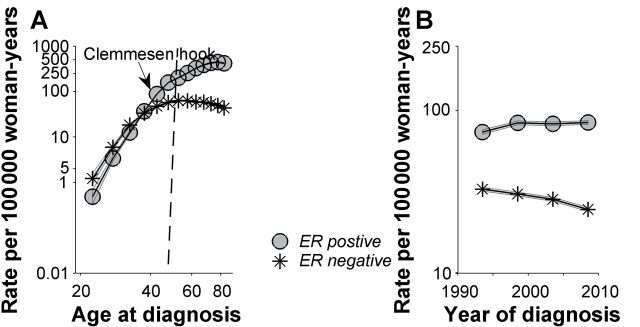Figure 1.

Breast cancer case and population data were obtained from the National Cancer Institute’s Surveillance, Epidemiology, and End Results 9 Registries Database from 1990 through 2010 among women with invasive estrogen receptor (ER)–positive and ER-negative breast cancer. The dataset included thirteen 5-year age groups (ages 20–24, 25–29, …, 80–84 years) and four 5-year time periods (1991–1995 1996–2000, 2001–2005, 2006–2010), spanning 16 partially overlapping 10-year birth cohorts, referred to by mid-year of birth (1911, 1916, …, 1986). We used the age–period–cohort framework to obtain the fitted or longitudinal age-specific incidence rate curve for the mid-cohort, adjusted for period effects (A) and the fitted temporal trends (B). A) Age-specific incidence rates for ER-negative cancers rise rapidly early in reproductive life and then flatten or fall. Rates for ER positive cancers rise rapidly early in life and then continue to rise at a slower pace. B) ER-positive and ER-negative temporal trends have diverged over time. ER-positive rates have risen, whereas ER-negative rates have fallen.
